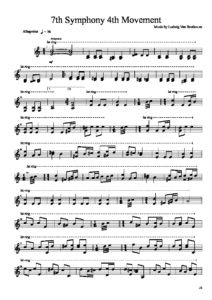

Keller, Hannah Kendall, and Michael Steinbergįor more information, including full program notes, visit the San Francisco Symphony’s digital program book platform at or text “SFS Concert” to 55741. The symphony’s finale is one wild unharnessing of sound.Īfter notes by James M. Instead, the famous second-movement Allegretto is relaxed only by comparison with what comes before and after. A semi-slow introduction, the largest ever heard in any symphony at the time of its premiere and still one of the largest, defines great harmonic spaces. Richard Wagner described Ludwig van Beethoven’s Seventh Symphony as representing “the essence of the dance.” The work includes many moments of real abandon. At its premiere, Beethoven was noted as remarking that it was one of his best. The work is dedicated to Count Moritz von Fries. The opening movement, “Palimpsest,” is a musical analogy to inscriptions on walls that do not entirely obscure what was written or painted beneath them, and the second movement employs multiphonic woodwind tones that may sound electronic but are not. 92, is a symphony in four movements composed by Ludwig van Beethoven between 18, while improving his health in the Bohemian spa town of Teplitz. In her three-movement Graffiti, she says, “one can hear allusions to a manifold of styles, which are juxtaposed in a kaleidoscopic manner.” Chin cites Street Art as a stimulus for this piece. Unsuk Chin’s early training in electronic music enlarged her conception of sounds she might apply to acoustic orchestral music. Composer Hannah Kendall notes, “ Tuxedo: Vasco ‘ de’ Gama takes its title from Jean-Michel Basquiat’s iconic 1982–83 artwork Tuxedo…His reference to Vasco da Gama (written as ‘Vasco de Gama’), the first European to voyage to Asia by sea, offers a commentary on exploration and the seeds of globalization and multiculturalism: two important themes in the context of the year 2020.”


 0 kommentar(er)
0 kommentar(er)
